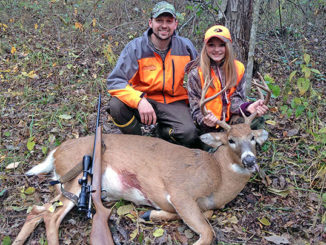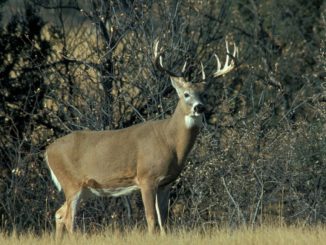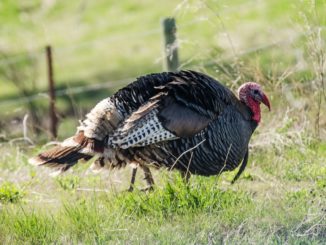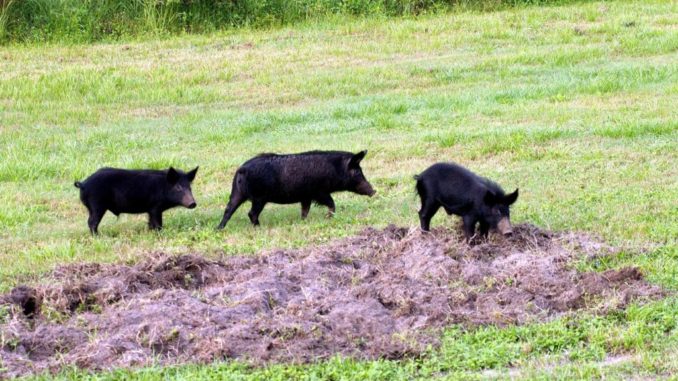
It’s admittedly not a major issue in North Dakota at the moment— feral swine. But a recent article highlighted the fact that, “North Dakota wildlife officials are keeping watch as the number of feral swine is exploding near the U.S.-Canada border.”
As you can see in this survey published earlier this year, wild pig populations are exploding in Canada. This is especially true with our neighbors to the north in the province of Saskatchewan. Pay close attention to the red found on the following distribution maps:
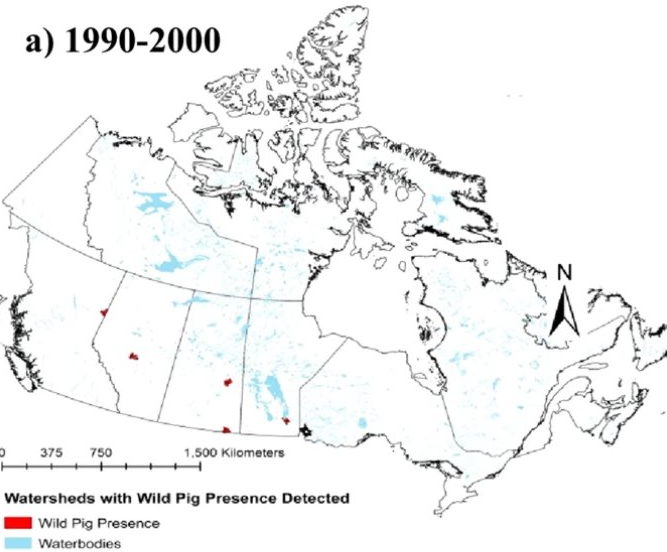
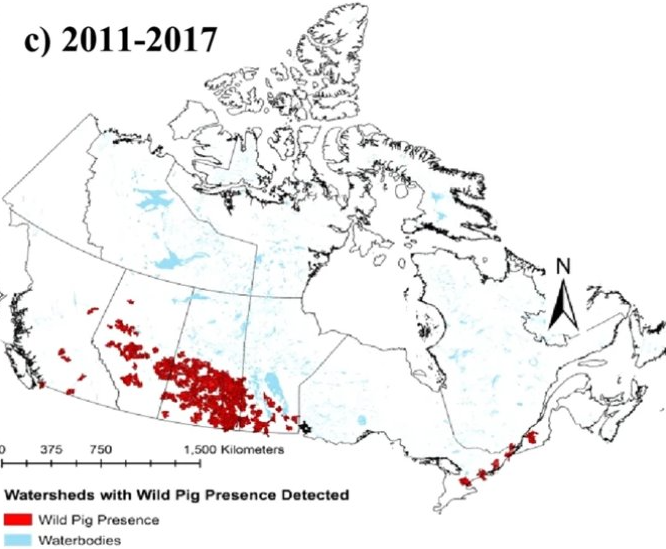
The red shows “Wild Pig Presence” from 1990-2000 and then 2011-2017. To put this into perspective in terms of location, look at this screenshot from a U.S.-Canadian map.
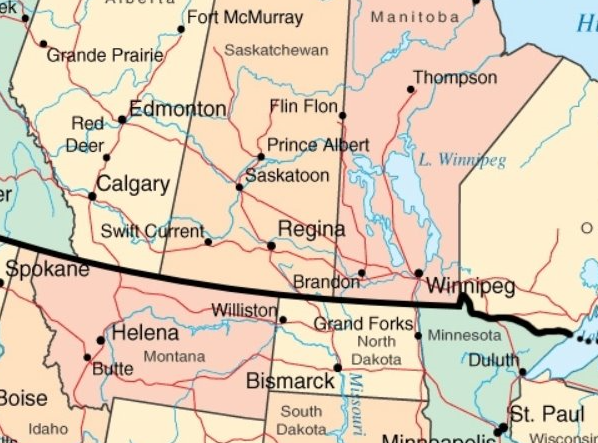
The University of Saskatchewan’s Ryan Brook, who is lead researcher for the Canadian Wild Pig Project, had this to say about the situation in Canada:
“The growing wild pig population is not an ecological disaster waiting to happen—it is already happening.
“Wild pigs are so widespread that they are a major challenge to control in Canada and eradication is only possible with a comprehensive plan to deal with this highly efficient invasive species. In Saskatchewan they are already posing significant risks to agriculture and livestock production. Our mapping of their expanding territory shows just how quickly they are spreading. This is a rapidly emerging crisis.”
This should cause some concern for landowners along the Canadian border in North Dakota. While some measures have been taken to do something about the growing problem in Canada, the FAQ section of the Canadian Wild Pig Project’s website says this:
“… there is no national (Canadian) feral pig management strategy and no provinces have identified specific goals or a provincial feral pig management strategy that we are aware of. Since feral pigs reproduce at such a high rate (capable of 12+ young/year) killing of a few animals has no population effect. Population reduction will require a highly aggressive, coordinated, and well monitored approach. Hunters can play an important role with this but only as part of coordinated hunt teams. Our research results will help inform better population control efforts and is essential for effective management.” (Emphasis Added)
I’m not sure there’s a lot of comfort to be found in the statement. And it makes us wonder where it leaves North Dakotans should these populations spread into the state? The answer to that question can be found on the websites of the North Dakota Game & Fish Department and the North Dakota Department of Agriculture:
“Individuals who encounter feral swine should not destroy them unless they encounter feral swine on their own property and there is a threat of harm or destruction of property.”
In other words, if it’s not your land, you can’t shoot them. And even if it’s your property and you destroy one or more of them, you are required to notify the State Board of Animal Health within 24 hours. This is based off state law found in North Dakota Century Code Section 36-26.
What’s the reasoning behind this kind of law? Again, according to the Canadian Wild Pig Project website:
“There has been a lot of research and practical experience on how to best get feral pigs under control. What we know is that killing individual pigs does little to nothing to control feral pig populations and will never bring populations under control. Shooting individual animals can actually make the problem worse by breaking up sounder groups and spreading feral pigs around to new areas. What has been successful is identifying and counting sounder groups and killing ALL animals in that group — killing anything less than 100% means that attempt was a failure.”
There’s no question that North Dakota law runs counter to what we would typically think of as a solution. Is there any doubt that when some folks across the state think of such an invasion, that the immediate temptation would be to call all your buddies, grab your rifles, and head out on an extermination mission? I think it would be. And I don’t think there’s necessarily any shame in admitting such a thing. But apparently it’s not the best overall solution.
Believe it or not, North Dakota has dealt with the issue of feral swine before. The first documented cases came in 2007, when state and federal agencies were notified of groups in both the badlands — near Grassy Butte — and the Turtle Mountains. In both cases, the critters were captured and/or killed. Yet, the present situation regarding Canada seems to be an entirely different situation than what the state has dealt with previously.
Should the law be changed in anticipation of the “ecological disaster” coming to North Dakota? Should it be expanded to allow more than just the landowner themselves to dispatch of feral swine on their property? How happy will Farmer Joe be if he could have taken out the entire herd with the help of some buddies, but some got away because he could only shoot them himself? Can the government be trusted to eradicate such a nuisance? Or is more of a partnership required between the public and government officials?
With the rate of population growth taking place across the border, my guess is that this is an issue North Dakota will be dealing with in the coming years. It almost seems inevitable.
As a side note, the Canadian Wild Pig Project is funded in part by the U.S. Department of Agriculture.
PLEASE LIKE & SHARE!
Sources:
- North Dakota wildlife officials are keeping watch as the number of feral swine is exploding near the U.S.-Canada border.
- https://www.nature.com/articles/s41598-019-43729-y
- https://news.usask.ca/articles/research/2019/wild-pigs-invade-canadian-provincesan-emerging-crisis-for-agriculture-and-the-environment.php
- http://wildpigscanada.ca/faq/
- https://gf.nd.gov/magazine/2016/oct/feral-pigs
- https://www.nd.gov/ndda/animal-health/feral-swine
- https://www.nd.gov/ndda/sites/default/files/legacy/resource/FeralSwineNDCC36.pdf



